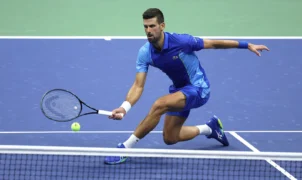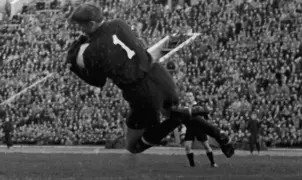Contents
The World Junior Championships, officially known as the World Athletics U20 Championships, is a biennial event that showcases the best young athletes from around the globe. Organized by World Athletics (formerly the International Association of Athletics Federations or IAAF), this competition serves as a stepping stone for future stars in track and field. The championships provide a platform for athletes aged 19 and under to compete at the highest level, gain international experience, and set the stage for their professional careers. This article explores the history, significance, notable performances, and future prospects of the World Junior Championships.
World Junior Championships History and Significance

Origins and Evolution
The World Junior Championships were first held in 1986 in Athens, Greece. The event was created to offer young athletes an opportunity to compete on an international stage, similar to the senior World Championships. Since its inception, the championships have grown in size and prestige, becoming a crucial event in the athletics calendar.
The championships have been hosted in various cities around the world, each bringing its unique flavor and cultural backdrop to the competition. From Santiago, Chile, to Beijing, China, the event has traveled across continents, reflecting the global nature of athletics.
Development of Young Talent
The World Junior Championships play a vital role in the development of young athletes. By competing against their peers from different countries, athletes gain invaluable experience and exposure to high-level competition. This experience helps them transition smoothly into senior-level athletics, where they often go on to achieve significant success.
Many of today’s top athletes made their mark at the World Junior Championships, using the event as a springboard to their professional careers. The championships not only highlight emerging talent but also provide a glimpse into the future of track and field.
Competition Structure
Event Categories
The World Junior Championships feature a wide range of track and field events, mirroring those found in senior competitions. These include sprints, middle-distance and long-distance races, hurdles, relays, jumps, throws, and combined events like the decathlon and heptathlon. Each event is contested by male and female athletes, ensuring a comprehensive showcase of young talent.
Qualification and Participation
Athletes qualify for the World Junior Championships through their performances at national and regional competitions. Each country’s athletics federation selects its team based on established qualification standards and criteria set by World Athletics. This ensures that only the best young athletes from each country participate in the championships.
Participation in the World Junior Championships is a significant achievement for any young athlete. It represents not only their personal dedication and hard work but also the support and investment of their coaches, families, and national federations.
Notable Performances and Records

Memorable Moments
Over the years, the World Junior Championships have witnessed numerous memorable performances and record-breaking feats. Some of the most iconic moments in the championships’ history include:
- Usain Bolt (2002): Before becoming a global superstar, Usain Bolt announced his arrival on the international stage by winning the 200 meters at the 2002 World Junior Championships in Kingston, Jamaica. At just 15 years old, Bolt’s victory made him the youngest-ever gold medalist at the championships and set the stage for his illustrious career.
- David Rudisha (2006): Kenyan middle-distance runner David Rudisha won the 800 meters at the 2006 World Junior Championships in Beijing, China. Rudisha’s performance hinted at his future dominance in the event, culminating in his world record and Olympic gold medal at the 2012 London Games.
- Dina Asher-Smith (2014): British sprinter Dina Asher-Smith won the 100 meters at the 2014 World Junior Championships in Eugene, Oregon. Her victory marked her as a rising star in sprinting, and she has since gone on to become one of the leading female sprinters in the world.
Championship Records
The World Junior Championships have seen numerous records set by young athletes, many of which still stand today. These records are a testament to the incredible talent and potential of the athletes who compete in the championships. Some notable championship records include:
- Men’s 100 meters: The current record of 9.97 seconds was set by Trayvon Bromell of the USA in 2014.
- Women’s 200 meters: The record of 22.18 seconds was set by Allyson Felix of the USA in 2002.
- Men’s long jump: The record of 8.35 meters was set by Sergey Morgunov of Russia in 2012.
- Women’s shot put: The record of 20.28 meters was set by Ilona Slupianek of East Germany in 1977.
These records highlight the exceptional performances gengtoto that have taken place at the World Junior Championships and the high standards of competition.
Impact and Future Prospects
Pathway to Senior Success
The World Junior Championships serve as a crucial pathway for athletes aspiring to reach the senior level. Many athletes who excel at the junior level go on to achieve success at the World Championships, Olympic Games, and other major international competitions. The experience gained at the World Junior Championships helps young athletes develop the skills and confidence needed to compete at the highest level.
Promoting Athletics Globally
The championships also play a significant role in promoting athletics globally. By showcasing young talent from around the world, the event inspires the next generation of athletes and encourages greater participation in the sport. The World Junior Championships help to cultivate a love for athletics and highlight the importance of youth development programs in nurturing future stars.
Challenges and Opportunities
While the World Junior Championships have been successful in many ways, they also face challenges. Ensuring the safety and well-being of young athletes is paramount, and organizers must continually work to provide a supportive and secure environment. Additionally, the championships must adapt to changing global conditions, such as the impact of the COVID-19 pandemic, which has affected sports events worldwide.
Despite these challenges, the World Junior Championships present numerous opportunities. The event can leverage advancements in technology to enhance the viewing experience for fans, provide better training and support for athletes, and promote greater inclusivity and diversity in athletics.
Conclusion
The World Junior Championships are a cornerstone of global athletics, providing a platform for young athletes to showcase their talents and compete at the highest level. With a rich history of memorable performances and record-breaking achievements, the championships continue to play a vital role in the development of future stars in track and field. As the event evolves and adapts to the changing landscape of sports, its impact on the world of athletics will undoubtedly remain significant. The World Junior Championships are not just a competition; they are a celebration of youth, talent, and the enduring spirit of athletic excellence.
Read More Article About “SANDBOARDING IN HUACACHINA: DESERT THRILLS IN PERU“





